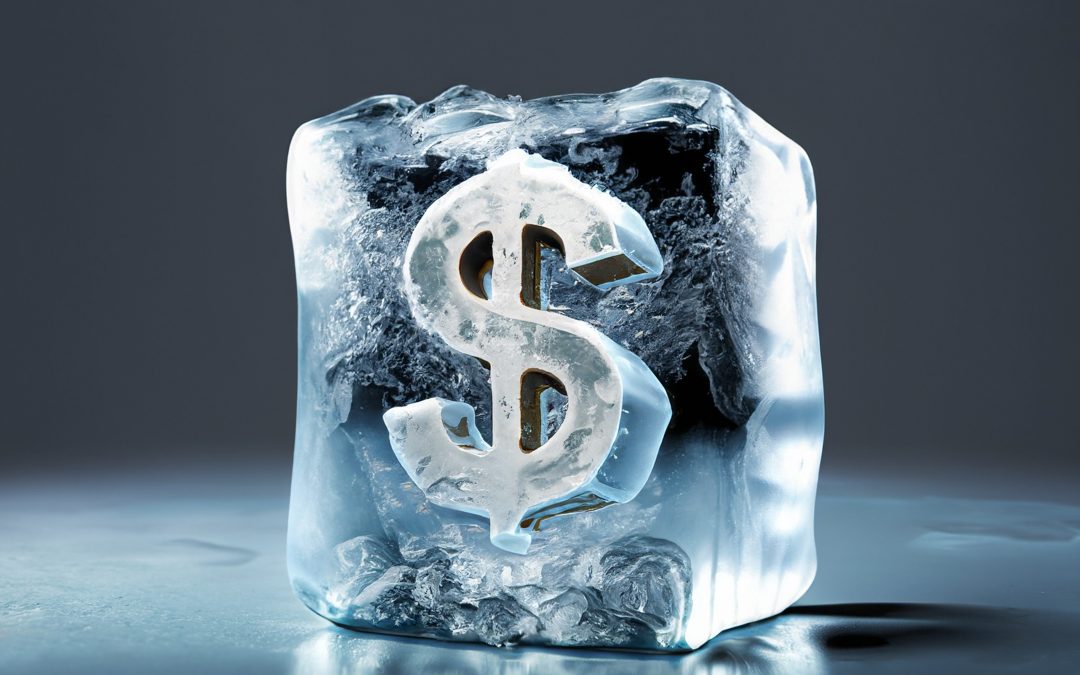Picture this: you wake up one morning, sip your coffee, and decide to check your bank account. To your shock and dismay, you discover that your funds are frozen. Panic sets in, and questions flood your mind. What happened? Why is your money locked away? If you’re facing such a scenario, it’s possible that the Canada Revenue Agency (CRA) has taken action. In this blog post, we’ll delve into why the CRA freezes bank accounts, the implications for individuals, and most importantly, the potential solutions, such as bankruptcy and consumer proposals.
Understanding CRA Bank Account Freezing
The Canada Revenue Agency plays a crucial role in administering tax laws and ensuring compliance. If you owe taxes, the CRA has the authority to take various measures to collect the outstanding amounts. One such measure is freezing bank accounts. This is not a step taken lightly; rather, it’s a last resort after other attempts to collect the debt have failed.
Common reasons for CRA freezing bank accounts include unpaid taxes, unfiled tax returns, or unresolved disputes. The CRA typically issues a series of warnings and notices before resorting to freezing accounts, giving individuals an opportunity to address the issue. If left unaddressed, however, the CRA may seize funds from your bank account to satisfy the debt.
Implications of a Frozen Bank Account
Having your bank account frozen can be a daunting experience, causing immediate financial distress. Bills, mortgages, and daily expenses may become insurmountable challenges. Moreover, the stress of dealing with frozen assets can have a significant impact on your mental and emotional well-being. It’s crucial to act swiftly and thoughtfully to resolve the situation.
Bankruptcy: A Potential Solution
When facing a frozen bank account due to tax-related issues, exploring bankruptcy as a solution becomes a viable option. While bankruptcy is often associated with negative connotations, it can provide a fresh start for individuals overwhelmed by financial burdens.
Filing for bankruptcy involves declaring that you are unable to pay your debts as they become due. In the context of CRA-related issues, bankruptcy can help eliminate or reduce certain debts, including tax arrears, depending on the circumstances. It provides immediate protection through an automatic stay, preventing creditors, including the CRA, from pursuing further collection actions, such as wage garnishments or bank account seizures.
It’s essential to consult with a licensed insolvency trustee to assess whether bankruptcy is the right solution for your specific situation. They can guide you through the process, explaining the implications and helping you make an informed decision based on your financial circumstances.
Consumer Proposals: Another Avenue
For those looking to avoid the severe consequences of bankruptcy, a consumer proposal presents an alternative. A consumer proposal is a formal agreement between you and your creditors, including the CRA, to repay a portion of your debts over an extended period, usually up to five years. It provides debt relief without the complete financial reset associated with bankruptcy.
When it comes to tax debts, a consumer proposal can be a beneficial tool. It allows you to negotiate with the CRA to reduce the total amount owed and establish a manageable repayment plan. This can be particularly advantageous for individuals with stable incomes who are capable of making regular payments but need relief from the burden of immediate, full repayment.
Working with a licensed insolvency trustee is crucial in developing a consumer proposal that addresses your unique financial situation while satisfying the CRA’s requirements. The trustee acts as an intermediary, facilitating negotiations and ensuring that the proposal is fair and realistic.
Navigating the Path Forward
Regardless of whether you opt for bankruptcy or a consumer proposal, taking swift action is essential. Ignoring the issue won’t make it disappear, and the consequences of a frozen bank account can escalate rapidly.
- Seek Professional Advice: Engage with a licensed insolvency trustee or a financial advisor to understand the implications of your situation and explore the most suitable options.
- Open Communication with the CRA: Proactively communicate with the Canada Revenue Agency. Ignoring their correspondence can exacerbate the issue. Discussing your circumstances may lead to a mutually agreeable resolution.
- Budgeting and Financial Planning: Implementing sound financial practices is crucial. Develop a realistic budget, cut unnecessary expenses, and prioritize debt repayment to avoid future financial pitfalls.
Facing a frozen bank account due to CRA actions can be a daunting experience, but it’s important to remember that solutions exist. Whether considering bankruptcy or a consumer proposal, seeking professional advice is key to navigating the complexities of the Canadian tax system. By taking proactive steps and exploring available options, individuals can regain control of their financial future and work towards a fresh start. Remember, you’re not alone – there’s support and guidance available to help you weather the storm and emerge stronger on the other side.

